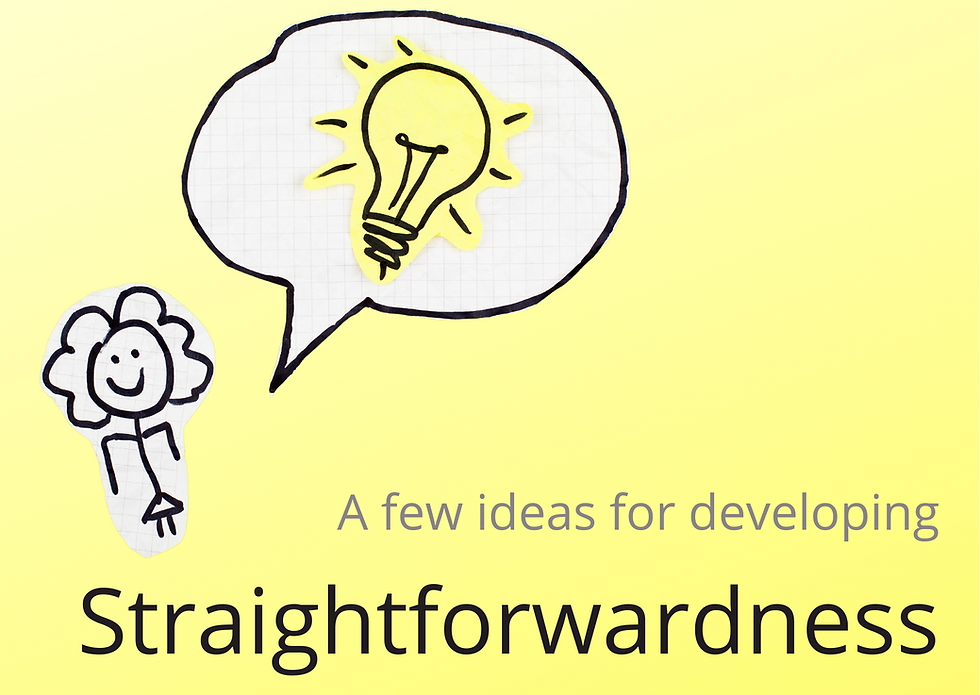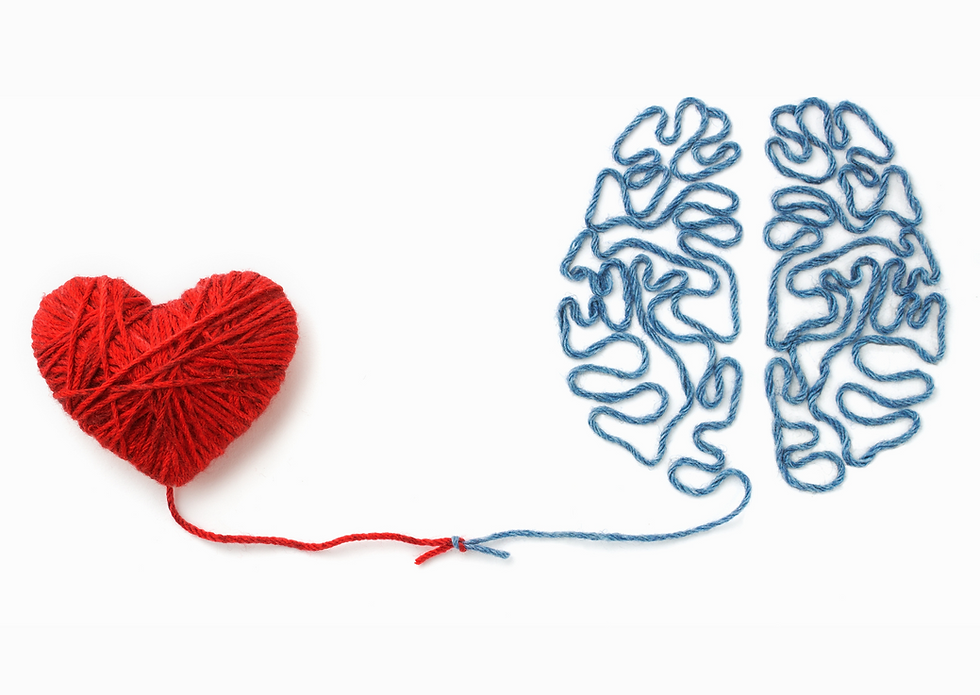Developing Straightforwardness
- Mary Ely

- Oct 19, 2022
- 3 min read
RocheMartin defines Emotional Intelligence by a set of 10 competencies and this is one in a series of blogs covering each one.

Straightforwardness is acknowledging that others may think differently from you and being able to calmly and clearly explain your perspective
The 3 components of Straightforwardness are
Self-Control
Self-Control is a competency in its own right and means that you can control your emotions so they don't impact how you will think, listen or communicate.
It also means recognising that you are in control of you and only you. You can't, don't need to and don't try to exert control on anyone else. And equally, you don't feel that you need to give away control of you to anyone else.
Assertiveness
Being willing to explain your opinion, what you believe and what's important to you.
Acknowledging others
Accepting that others may think, act, communicate and make choices that are different to you.
Being willing to consider different perspectives and respond accordingly.
To find out more and why it's so important, have a look at this blog.
Ideas for developing Straightforwardness

Developing Self-Control
Learn about people
Coaching
Developing Self-Control
As Self-Control is an emotional intelligence competency in its own right, this blog provides more information and some ideas on how to develop it.
Learn about people
They say that 'understanding is power' and that's as true for people as it is about anything else.
If you know how you and everyone else work as human beings, it's much easier to figure out how to develop any of the emotional intelligence competencies, including Straightforwardness.
How can you learn about people?
Neuro Linguistic Programming (NLP), draws together learning from psychology and neuroscience and puts it into a very understandable and useable form so it's great for easily learning about people.

These blogs cover the basics
The NLP Communication model illustrated above
How that model is populated - how we come to be the people we are
Using the Magic Triad to change how you think, feel and. behave from moment to moment
Here's a little summary of the key learning points for Straightforwardness
What we think about something determines how we feel about it and what we decide to do.
What we think about something is based on which bits of available information we use and how we process it.
Our processing is based on
Who we are, what we already know, believe and think is important, which is based on all of our unique experiences,
PLUS how we are feeling and what we are saying to ourselves in the moment.
As a result,
We all get to the best conclusion we can, which we will believe is the right one (at least from our point of view at the time).
The chances of thinking and therefore acting exactly the same as someone else are extremely low and complete agreement certainly can't be guaranteed! My version of 'right' is unlikely to be exactly the same as yours.
Judgement or labels like Right and Wrong, Good and Bad, Better or Worse aren't useful as they stir up emotion (and self-control is important).
Remembering WE'RE ALL JUST DIFFERENT, and that's entirely normal, is helpful!

How does that learning help with Straightforwardness?
Acknowledging others
The fact that someone else may think differently about something and react differently to you is obvious when you know how people process what is going on.
Self-Control
Expecting difference and taking the judgement out of it means there is no reason to get upset when it happens. There is just a difference and that is worth exploring...
Assertiveness
Exploring the difference means it's OK to explain how you got to your 'answer' and makes it easier to stay curious about how someone else got to theirs.
Uncovering the differences in the information used and the processing is key to finding a way forward together that is OK for everyone.

For example, if you have a change that you want to implement with your team, you need to
Accept that most people don't really like change as they think it's scary, uncomfortable and takes effort. There's a good chance they may not be as enthusiastic about the change as you are.
Stay curious and find out what seems scary, what makes the change feel uncomfortable and what the perceived effort is.
Explore what you could do to help make the change feel safe, comfortable and manageable...and act on that information to get the results you want, with everyone now bought into the idea.
Coaching
Coaching is by far the most efficient, effective, engaging, empowering and enjoyable way to build any of the Emotional Intelligence competencies.
Helping you to develop, refine and embed your own personalised strategies for each competency.

If you’re interested in understanding your level of emotional intelligence using one of the RocheMartin assessments or would like to explore coaching for developing components of it like Straightforwardness, you can book a free call here.
And if you'd like to try out my monthly emails that provide a roundup of my blogs as well as other insights, you can sign up here.






Comments